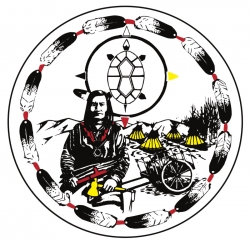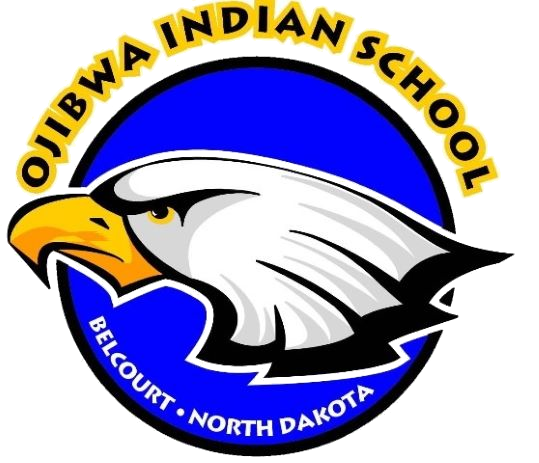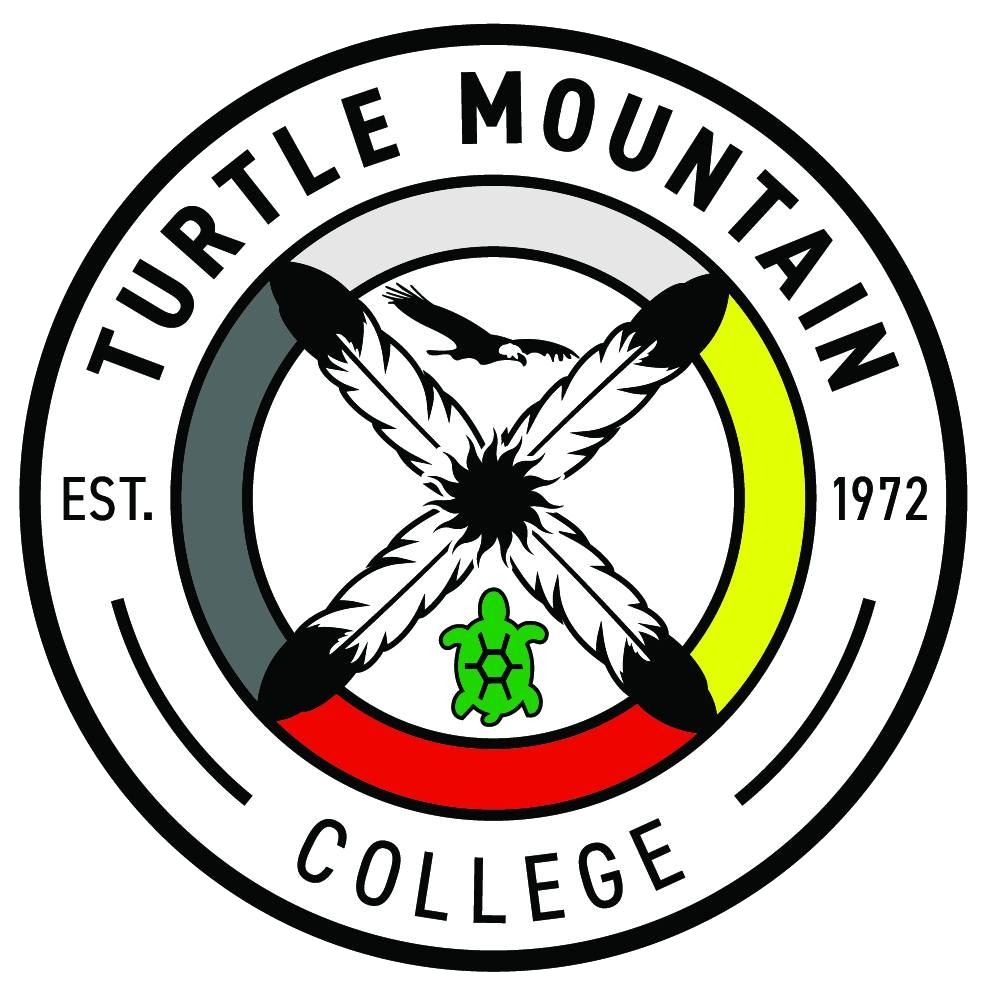
Facts About TMBC
- Location & Size: The Turtle Mountain Reservation is in Rolette County, North Dakota, 15 miles from the Canadian border, and spans 6 × 12 miles, established in 1882.
- Population: They are a federally recognized tribe of Ojibwe/Annishinaabe (Chippewa) and Métis descent, with a total estimate of 33,276 members enrolled members (7/10/24) and there are approximately 14,500 tribal members living on or near the reservation
- Languages: English, Ojibwe, and Michif (language is a mix of French, Ojibwe, & Cree)
Belcourt, ND 58316
(701) 477-2600
Historical Overview of TMBC
The Turtle Mountains are within the traditional territory of the Plains Ojibwe, as well as part of the Métis homeland. Rapid colonization and settlement in the 19th century, and the establishment of the "Medicine Line" border between Canada and the United States, displaced many Indigenous peoples to and from the region. Those who remained on the US side of the border were identified as the Turtle Mountain Band of Chippewa.
Life included a semi-annual buffalo hunt that was necessary for the survival of all the tribe through the production of pemmican, gathering of wild foods, and trapping fur animals for trade. After first contact, some of the Ojibwe intermarried with European fur traders and some of the earliest Métis families were associated with the band. As the Métis culture blended with the Ojibwe culture, new technologies such as rifles became used in hunting, and a unique type of homemade horse and/or ox drawn carriage was developed by the Métis, called the “Red River Cart.”
Over the past two centuries a unique, blended culture has developed - with strong influences of both the Ojibwe and Métis creating a unique heritage that is found nowhere else but here.
Why it’s called the ‘Turtle Mountains’
Legends says that when viewed from the south, the land-form known as the ‘Turtle Mountains’ appeared to the Anishinaabe as a turtle on the horizon with the head pointing westward and the tail to the east. Another legend says that the Turtle Mountains were named for a man named “Mickinock” (turtle) who walked (or ran) its entire length in one day. Other names given to the Turtle Mountains include Makinak Wudjiw (Turtle Mountain in Ojibwemowin), LaMontagne Tortue (Michif for ‘Turtle Mountain’), Turtle Hill, Beckoning Hills, and the Blue Jewel of the Plains. (TM Heritage Center)
Election Process
The Turtle Mountain Band of Chippewa Tribal Government consists of a Tribal Council – 8 Council Representatives (2 per district) and 1 Chairman (Elected At-Large), and the Tribal Court system. The Tribal Council meet once a month in an Open Public Meeting (OPM), with all other open-to-the-public meetings held at the Tribal Headquarters. The Reservation shall consist of four (4) districts.
Election Summary:
- General Elections are held every two years on the first Tuesday in November of even-numbered years, starting in 2016.
- If that Tuesday falls on a holiday, the election aligns with National, State, and County election dates.
- A primary election takes place three weeks before the general election.
- In the primary, the top three candidates (by number of votes) advance to the general election for district positions.
- For the Chairman position, the top two candidates in the primary move on to the general election.
- The candidate with the highest number of votes for each open seat in the general election is declared elected.
Turtle Mountain Flag
 | The Turtle Mountain Band of Chippewa flag holds deep cultural meaning. Surrounding the design are 12 eagle feathers, symbolizing the 12 months of the year. At the center stands Chief Little Shell, holding a pipe and hatchet, representing both peace and defense. A Red River cart honors the Métis heritage of many Tribal members, while four tipis represent the four districts on the reservation. The sacred circle with four directions—marked by the colors yellow, red, black, and white—reflects the teachings of the Seven Grandfathers, symbolizing wisdom, love, respect, bravery, honesty, humility & truth. A turtle within the circle ties to the tribe’s identity and the creation story of Turtle Island. |
Education
Turtle Mountain offers PreK–12 education through local public and tribal schools, with higher education provided by Turtle Mountain College, which offers culturally rooted degrees and job training.
Turtle Mountain Community Schools Belcourt School District #7 Grades - PreK-12 | Dunseith Public Schools District #1 Grades - 9-12 |
 Ojibwa Indian School Bureau of Indian Education Grades - K-8 | Dunseith Day School Grades - K-8 |
St. Ann's Catholic School Private - Catholic School Grades - PreK-6 | |

